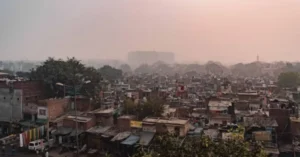Tucked in the Birbhum district of West Bengal, Rampurhat is more than just a small town—it’s a regional hub for transport, pilgrimage, education, and local economy. Yet, for both its residents and visitors, one critical factor often shapes the rhythm of daily life here: the weather. Whether it’s the sudden downpour in July or the fog-draped mornings of January, Rampurhat weather has its own patterns, peculiarities, and, increasingly, changes that mirror broader climate shifts across India.
If you’re reading this to understand what kind of clothes to pack, plan agricultural work, manage school schedules, or simply learn how the climate in Rampurhat has evolved in recent years, this article is for you. In a time when even small towns are not immune to the effects of climate variability, a closer look at Rampurhat’s weather is no longer just academic—it’s necessary.
1. Introduction to Rampurhat’s Geography
Rampurhat lies near the border of Jharkhand and is considered the gateway to Tarapith, one of Bengal’s most important pilgrimage sites. Located approximately 220 kilometers from Kolkata, the town sits in a transitional climate zone, influenced by both Gangetic plains and Chota Nagpur Plateau ecosystems.
This geographic location brings a blend of dry tropical and humid subtropical conditions, meaning that Rampurhat experiences significant seasonal variation—hot, dry summers, intense monsoons, and cold winters.
2. Seasonal Overview: The Four Major Phases
Rampurhat’s weather follows a relatively predictable annual cycle, segmented into four core seasons:
- Summer (March to June)
- Monsoon (June to September)
- Post-Monsoon/Autumn (October to November)
- Winter (December to February)
Each phase brings not only its own climate but influences economic activities, cultural rhythms, and health patterns across the region.
3. Summer in Rampurhat: Heat, Dust, and Dry Winds
Duration: March to June
Temperature Range: 30°C to 45°C
Rampurhat summers are hot, dry, and often unforgiving. Temperatures frequently cross 40°C in May, especially during “loo” conditions—hot, dry winds blowing in from the west. The heat is often accompanied by water scarcity in some surrounding rural areas, leading to dependence on deep tube wells and stored water sources.
Key impacts during summer: Rampurhat Weather
- Schools often adjust schedules, closing early to avoid peak heat.
- Electricity usage spikes, due to increased reliance on fans and air conditioners.
- Dust storms in late afternoons are common and can disrupt transport.
Despite the heat, summer also marks harvesting of rabi crops, making it an economically crucial period.
4. Monsoon Season: Relief and Risk
Duration: Mid-June to Late September
Temperature Range: 24°C to 34°C
Average Rainfall: 1100–1300 mm (per season)
Monsoon is the lifeline for agriculture in Rampurhat but also brings its fair share of challenges. The arrival of the southwest monsoon is typically mid-to-late June, ushering in heavy rains that cool the region and recharge local ponds and reservoirs.
Positive Impacts: Rampurhat Weather
- Vital for paddy cultivation in surrounding rural blocks.
- Reduces summer dust and improves air quality.
- Helps revive local greenery and water tables.
Negative Impacts: Rampurhat Weather
- Waterlogging in low-lying areas.
- Disruptions in train and bus services.
- Occasional flash floods, especially when rivers overflow.
- Vector-borne diseases like dengue and malaria rise during this time.
Residents typically prepare by cleaning drains, storing dry goods, and keeping emergency power backups.
5. Autumn and the Festive Transition
Duration: October to early November
Temperature Range: 22°C to 32°C
This short season marks the transition from rains to clearer skies. The air is cleaner, temperatures begin to drop, and humidity decreases. Culturally, it aligns with Durga Puja, Lakshmi Puja, and Kali Puja, making it a vibrant time of year.
Clothing transitions from light cottons to light woolens by the end of this season. For agriculture, this period allows farmers to prepare for the winter crop cycle, especially mustard and potatoes.
6. Winter in Rampurhat: Fog and Chill
Duration: December to February
Temperature Range: 8°C to 22°C
Rampurhat experiences a noticeably cold winter, especially during January mornings when dense fog blankets the town, reducing visibility to a few meters. While not as severe as North India, the cold is enough to affect early morning travel, school timings, and outdoor work.
Key features of winter in Rampurhat:
- Foggy mornings, clear afternoons
- Night temperatures dropping below 10°C, occasionally to 7–8°C
- Increased use of woolen clothing and room heaters
- Festival of Makar Sankranti coincides with the seasonal shift
Older citizens and children are especially vulnerable during this season, requiring community-level health precautions.
7. Temperature and Rainfall Averages (Updated Patterns)
Based on data from the last five years, here’s an updated pattern of temperature and rainfall that reflects climate volatility:
| Month | Avg Max Temp | Avg Min Temp | Rainfall (mm) |
|---|---|---|---|
| January | 23°C | 9°C | 18 mm |
| April | 39°C | 23°C | 12 mm |
| July | 32°C | 25°C | 390 mm |
| October | 30°C | 20°C | 110 mm |
| December | 25°C | 11°C | 10 mm |
Rampurhat Weather has shown signs of rising summer highs, and erratic monsoon arrivals, sometimes leading to early floods or late rains impacting agriculture.
8. Impact on Agriculture and Rural Economy
Birbhum district’s economy is largely agrarian, and Rampurhat Weather serves as a market and logistic base for many villages. Weather directly influences:
- Kharif crops: Paddy is most affected by delayed or excessive monsoons.
- Rabi crops: Mustard, lentils, and potatoes need stable winter temperatures.
- Fruit orchards and floriculture: Heavily influenced by summer heat and rainfall timing.
In recent years, climate unpredictability has led to crop losses, which in turn affects migrant labor patterns and rural purchasing power.
9. Urban and Daily Life Shaped by Weather
Everyday life in Rampurhat Weather—education, healthcare, transport, and retail—is shaped by seasonal rhythms:
- Summer heat drives daytime activity to mornings and evenings.
- Monsoon slows traffic and damages roads, increasing commute times.
- Winter fog affects train schedules, especially early morning express routes.
- Electricity bills spike in both summer and winter due to increased fan/heater usage.
Clothing shops, umbrella vendors, tea stalls, and cycle repair businesses all time their inventory around weather cycles.
10. Climate Change Effects in Rampurhat
Rampurhat Weather is now experiencing the early fingerprints of climate change, though not in as dramatic a way as coastal cities. Changes include:
- Unseasonal rains damaging winter crops.
- Longer summer periods, extending into early June.
- Shortened and inconsistent monsoon patterns.
- Rise in vector-borne diseases due to longer humid periods.
- Groundwater depletion due to increased summer water usage.
Local NGOs and civic bodies have started awareness programs, but policy implementation lags behind need.
11. How Residents Adapt to Weather Extremes
Rampurhat Weather residents, especially in rural fringes, have developed practical resilience strategies:
- Rainwater harvesting pits in newer houses.
- Use of traditional clay structures for cooler interiors.
- Community grain storage in anticipation of rain delays.
- Use of solar panels and inverter batteries for power backup.
In urban Rampurhat Weather, apartments and modern retail spaces are now incorporating thermal insulation and better ventilation to adapt to longer summers.
12. Weather and Public Infrastructure
Municipal authorities face annual pressure to repair weather-damaged infrastructure:
- Potholes and damaged roads after monsoon require extensive repair.
- Drainage systems are often overwhelmed, needing upgrades.
- Public hospitals and schools still lack centralized heating or cooling systems.
The challenge lies in balancing limited budgets with rising maintenance needs. However, recent state-level urban development programs have begun earmarking Rampurhat for pilot smart-town projects that include weather-resilient architecture.
13. Forecasting: Accuracy and Accessibility in 2025
As of 2025, weather forecasting for Rampurhat Weather has improved with:
- Wider access to mobile-based alerts
- Integration with Google Weather, IMD app, and local government platforms
- Radio-based updates for farmers in rural areas
Yet, gaps remain:
- Forecasts are still too generalized, often not hyper-local.
- Rural users may lack digital literacy to interpret forecasts.
- Disaster response plans remain largely reactive.
There’s a growing need for community weather education—explaining patterns, risks, and actions.
14. Conclusion: Rampurhat Weather
Rampurhat weather is more than a backdrop—it is a living force that shapes the town’s identity, economy, and resilience. From the heat of summer to the whispering winter fog, every season arrives with its own challenges and colors. And while traditional cycles still hold, modern pressures—climate change, urbanization, and infrastructural stress—are rewriting familiar patterns.
Understanding Rampurhat weather is no longer just useful for farmers and travelers. It’s essential knowledge for urban planners, educators, local businesses, and even health workers. If 2025 has shown us anything, it’s that even small towns cannot afford to ignore the climate anymore.
15. FAQs: Rampurhat Weather
1. What is the best time to visit Rampurhat?
The most pleasant time is between October and February, when temperatures are moderate, and skies are clear.
2. How hot does Rampurhat get in summer?
Temperatures can reach up to 45°C, particularly during late May and early June.
3. Does Rampurhat experience heavy rainfall?
Yes. During monsoon (June–September), the town receives 1100–1300 mm of rainfall on average.
4. Are winters very cold in Rampurhat?
While not extreme, winter mornings can drop to 8–9°C, often accompanied by dense fog.
5. Is Rampurhat affected by climate change?
Yes. Rising summer temperatures, erratic rains, and increased vector-borne diseases suggest climate variability is affecting the region.
For more information, click here.









